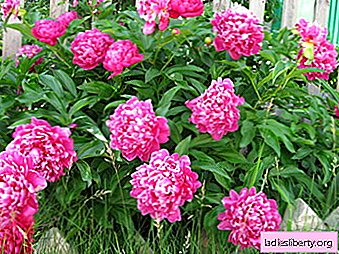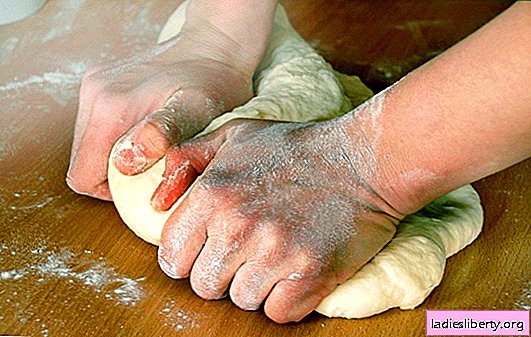
Kind Pion (Paeonia) is the only one in the peony family (Paeoniaceae) and comes from Southeast Asia. Peony flowers were cultivated many centuries before the new era in China, Greece, Rome, where they were used as ornamental and medicinal plants.
The ancient Greek legend about the appearance of a peony is very beautiful. She tells that the once living youth of Peon, who was a student of the god of healing Aesculapius, the goddess of night darkness Laton endowed with a mysterious plant that has amazing healing properties. With the help of this plant he was able to heal the god of hell Pluto from the wounds that were inflicted on him by Hercules. Because of this, Aesculapius harbored envy at the student and decided to kill him. But Pluto, grateful to Peon for the cure, did not let him die and turned it into a beautiful flower - a peony.
In Russia, peonies appeared only during the time of Peter I, who loved these flowers very much; in the first half of the 19th century, the Russian collection was replenished with luxurious varieties of French selection, however, for a long time peonies remained unknown to a wide range of flower lovers. Only in the post-war years, domestic flower growers drew attention to him and engaged in selection, as a result of which many varieties of these beautiful fragrant flowers appeared.
The classification of garden peonies is based on the difference in the structure of the flower, which can be non-double, Japanese, anemic, semi-double, double. According to the timing of flowering, peonies are early, medium and late.
Peony - growing and care
For breeding peonies, it is best to choose open, sunny, well-warmed places protected from the winds. However, without air circulation, the risk of developing diseases increases, so the area where peonies grow should be somewhat removed from buildings and trees.
With strong shading during the day, even for several hours, full flowering of plants is out of the question. The best for peonies are loamy, well-dug soils. In moist, wetlands, they do not take root, therefore, if necessary, they arrange drainage from gravel and gravel at a depth of 60-70 cm.
Peonies do not need to be watered often, however, each watering should consume 2-3 buckets for each adult bush, so that water can soak the soil to the depth of the roots. It is especially important to sufficiently moisten the soil in spring, when buds are planted and flowering occurs, and at the end of summer, during the laying of flower buds. After watering, the soil is subject to mandatory loosening, to preserve moisture in the soil, improve its aeration and slow down the growth of weeds, which take away nutrients from flowers and cause the spread and development of diseases.
In autumn, the stems of peonies must be cut off at the soil level and burned, sprinkling their remains with ash (up to 3 handfuls are needed for each bush). It is not necessary to cover adult plants.
Peony - transplant and reproduction
With appropriate pre-planting tillage and care, peonies can remain in one place without transplanting for up to 20 years or even more. As a rule, the next year after planting, the development of the plant is slow, they begin to bloom only the 2-3rd year, every year more and more abundantly. Therefore, if you want peonies to always bloom, you do not need to transplant them often.
If there is still a need to transplant flowers, then doing it whole, without dividing, should not be done, since such a plant will grow poorly and bloom weakly, because it will not develop a new root system.
The most common method of propagation of peonies is the division of rhizomes, which should be done in August or early September. With this method, the plant should be carefully dug around and removed from the soil. Then, having cleaned it from the ground and removing the rotten roots, you need to cut them at an angle.
The best part of the bush is considered to be the best dividend, having from 3 to 5 eyes and the same number of roots. It is much easier to divide bushes, the roots of which are slightly sagged. To plant a peony bush, you need a pit measuring 50 to 60 cm in depth and in diameter, the bottom should be loosened to the depth of a shovel, and add a mixture of the upper soil layer and well decomposed humus (10 kg) with mineral fertilizers (approximately half the volume) ( about 100 gr.). Delenki should be planted in such a way that the eyes are 5 cm below the soil level. If they are higher, the plant may freeze in winter; if lower, then they will bloom poorly. After planting, you need to firmly compact the soil around the rhizome. Young bushes are able to bloom two to three years after transplanting.
Peony - Diseases and Pests
Peony is little susceptible to pests and various diseases. Among them, the most common are gray rot, which affects buds, leaves, stems, and annular leaf mosaics. To protect peonies from diseases, they are sprayed with a 1% solution of Bordeaux fluid or other preparations containing copper. Spraying should be done before the buds are formed, and ideally, in the early spring for the first time, and after 10 days - the next.
Peonies can be exposed to various beetles and ants. For example, before flowering, their buds can eat bronze beetles. They can be collected manually, or you can spray the plants with the appropriate fungicide.
Nevertheless, it is quite simple to grow these flowers, and it’s difficult for them to find equal among garden crops in beauty and divine aroma.











